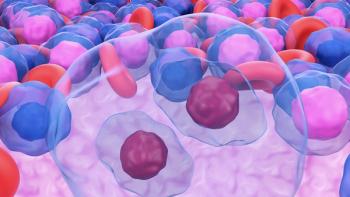
Expert Dispels 3 Palliative Care Myths
Palliative care can improve outcomes in patients with cancer but is not used as often as it could be.
Specialty palliative care, which is performed by professionals outside of the oncology clinic, is becoming increasingly used in cancer care and has the potential to improve outcomes, too, explained Carolyn Lefkowits, MD, gynecologic oncologist and palliative care doctor at the University of Colorado.
Lefkowits sat down with OncLive®, a sister publication of Oncology Nursing News®, at the Society of Gynecologic Cancer (SGO) 2019 Annual Winter Meeting to discuss the importance of palliative care, as well as common myths that people may have about its use.
OncLive®: Your research mentioned that early palliative care is associated with better overall survival. Can you speak to that?
Lefkowits: The trial specifically that we discussed today is of a lung cancer population back from 2011. The primary outcome for that trial was quality of life at 12 weeks. It was a study not of palliative care versus no palliative care, but of routine early integration of palliative care from the time of diagnosis in this population that had a prognosis of only about a year, versus routine care.
It did meet its primary outcome of the routine palliative care group having more improvement in quality of life. They also noted that the early palliative care group, despite having less aggressive care near the end of their lives, actually lived longer. It was not designed to look at that primarily, but I think at the very least we can feel assured that when we include palliative care early in the disease course, at least we are not compromising survival by doing so.
What are some barriers to routine specialty palliative care integration?
Availability is an issue. What we focused on today was outpatient specialty palliative care, meaning palliative care in the clinic. As of 2010, about 60% of (National Cancer Institute)-designated cancer centers have that availability. I bet it's higher now. There are some payment model issues, as it related to palliative care in a fee-for-service model. Those are things that we as oncologists have little control over.
What kind of barriers do healthcare providers have control over?
What we do have control over is common misperceptions that we as providers hold and our patients hold about palliative care integration that limit us from using it optimally.
So, we talked today about 3 myths. The first is the idea that in referring patients to palliative care, that visit will only involve discussions about advanced care planning and dying. There are data to refute that. A first palliative care visit more commonly focuses on things like illness understanding, coping, and symptom management. And the idea that when palliative care visits do address prognosis or advanced care planning, the palliative care specialists really should be taking the information about prognosis, disease-directed therapy actions, and response rates from the oncologists. I think we as the oncologists absolutely should be providing those prognostic estimates and take that data and then incorporate the palliative care specialists' expertise around goals-based decision making to help the patient choose the path that's best for them.
The second one we talked about was the myth that palliative care would take away hope. There is data to support the idea that prognostic uncertainties — so when we don't talk about what the future might hold with a cancer – is distressing to patients. In 1 study of inpatients receiving specialty palliative care, they asked them about whether they had or how much distress they had about uncertainty around their illness. About three-quarters of them had at least moderate distress about feeling that they didn't know what to expect in the future. Then we also have data to stress that we do have advanced care planning conversations, after their depressive and anxiety symptoms actually go down. Patients are thinking about these things anyway and when we don't bring them up, it can actually make distress, depression, and anxiety worse for the sake of the unknown. Then we do sometimes end up redirecting hope because I think there are things other than cure that are worth hoping for. Sometimes, without taking away hope, we can foster accurate prognostic awareness, which sometimes involves redirecting hope, (as) it is reasonable and still does not take away the power that comes with coping.
The final myth we talked about is the idea that we as oncologists can and should do all the palliative care ourselves. For (gynecologic) oncologists, because we do surgery and chemotherapy, I think that we all think that we should all do the palliative care. The idea of incorporating more specialty palliative care is not to de-skill or undervalue the contribution of primary palliative care provided by the oncologists, but I think to assume that the clinical benefits from the studies, especially palliative care, would be recognizable that primary palliative care failed to recognize a few key differences. First, the time aspect of it. Just within the lung cancer study that I mentioned, the average length of a first visit with palliative care was almost an hour. In my own palliative care clinic, I get two hours to see a new patient and the truth is that we just don't have that time in oncology clinic. I think we have to ask ourselves as oncologists: Can we reasonably provide the same dose of palliative care that is described in these studies where they had dedicated palliative care visits once a month? Can we really provide that same dose with the same clinical benefit within the confines of the time that we have in oncology visits?
The other piece is that the focus of a palliative care conversation at a branchpoint in decision making, like recurrence, are different than oncology. There's data behind that. There's more attention to caregiver support and prognosis, advanced care planning. Some of that comes back to the first difference, which is time. When you have an hour, you can really do justice to those things in a way that is just not possible to do in the oncology visit.
The myths that we tried to bust were that referral to palliative care means you'll talk about dying and advanced-care planning; that palliative care takes away hope; and that we as oncologists should be able to do all the palliative care.
How can specialty palliative care integration be improved on the system level and on the individual level?
At the system level, we're stated to suggest that co-location of palliative care services, meaning when the palliative care clinic is in the same space as the oncology clinic, that patients are more likely to use it. That may be more about the normalization and the message that this is part of your oncology care. You come to see your palliative care provider the same way you come to see your oncologist.
Another piece is naming and what we call this service that has been called palliative care. At one institution when they changed their name from palliative care to supportive care, they saw a big increase in their referrals. We're thinking that may have to do with a misconception, but still [present] idea of palliative care being end-of-life care and that being more threatening, somehow, to patients and providers in a way that acted as a barrier to referrals. The name "supportive care" may be less threatening.
Newsletter
Knowledge is power. Don’t miss the most recent breakthroughs in cancer care.
















































































